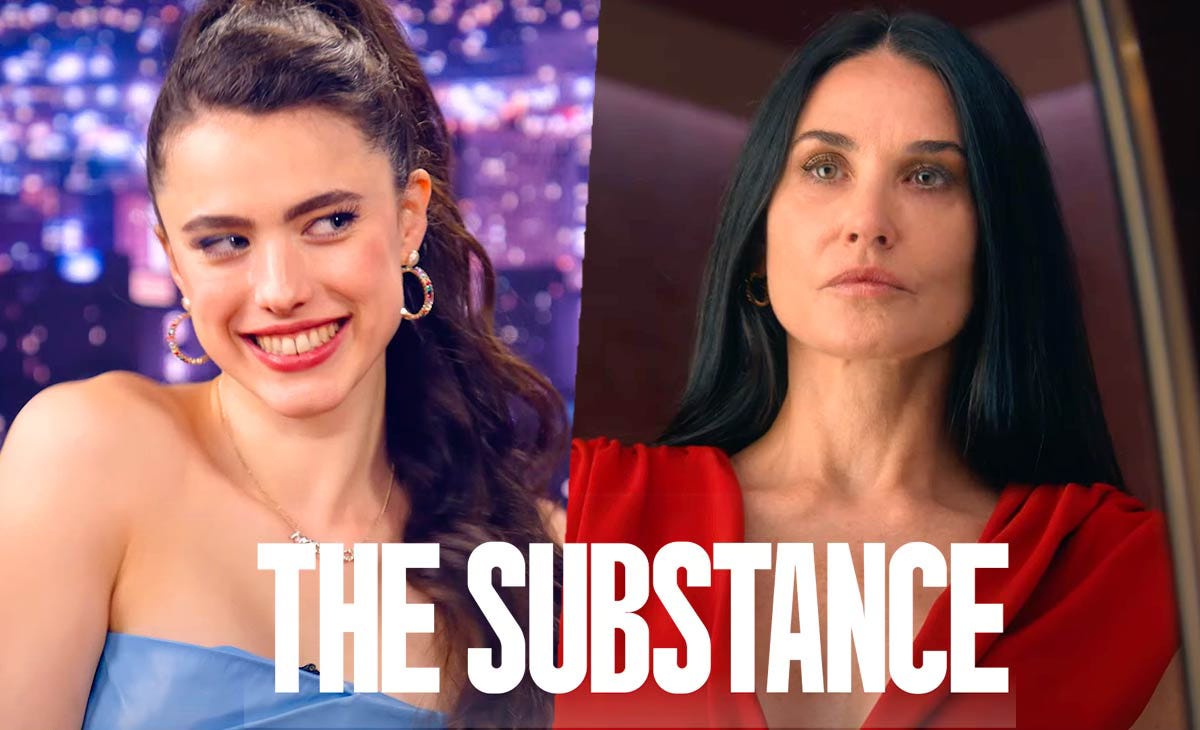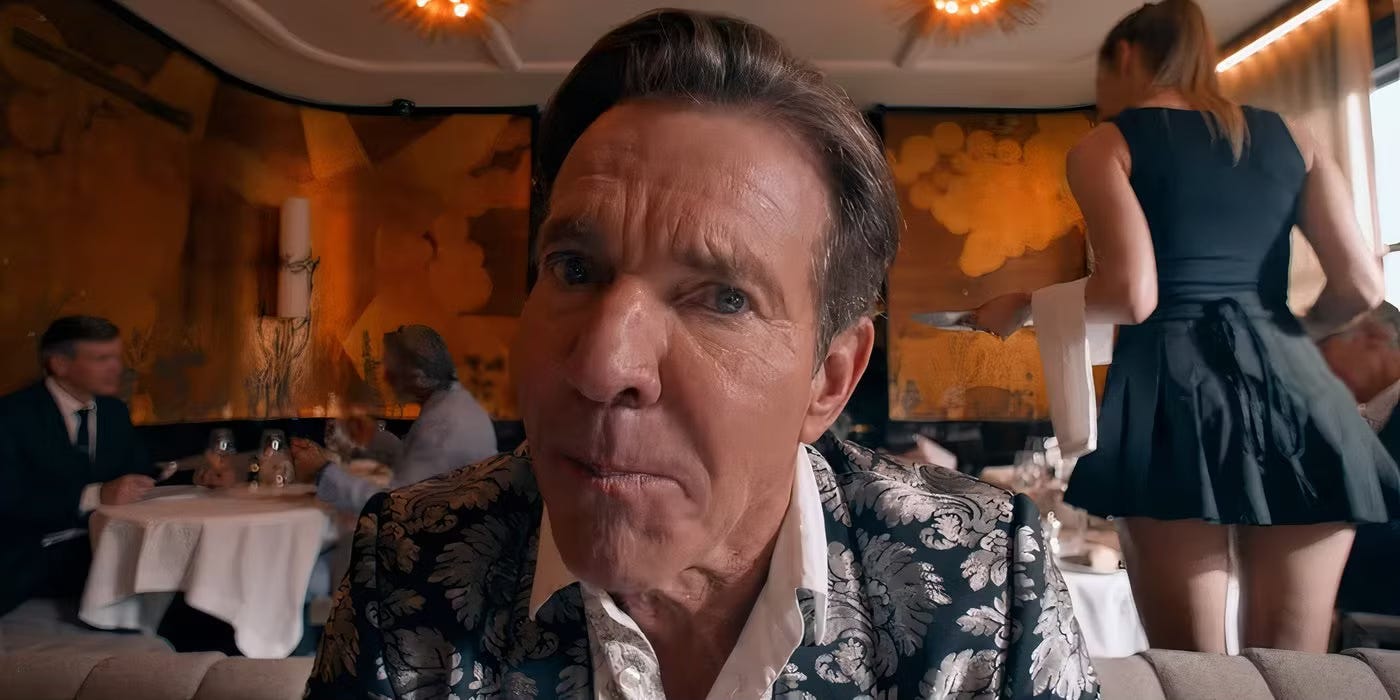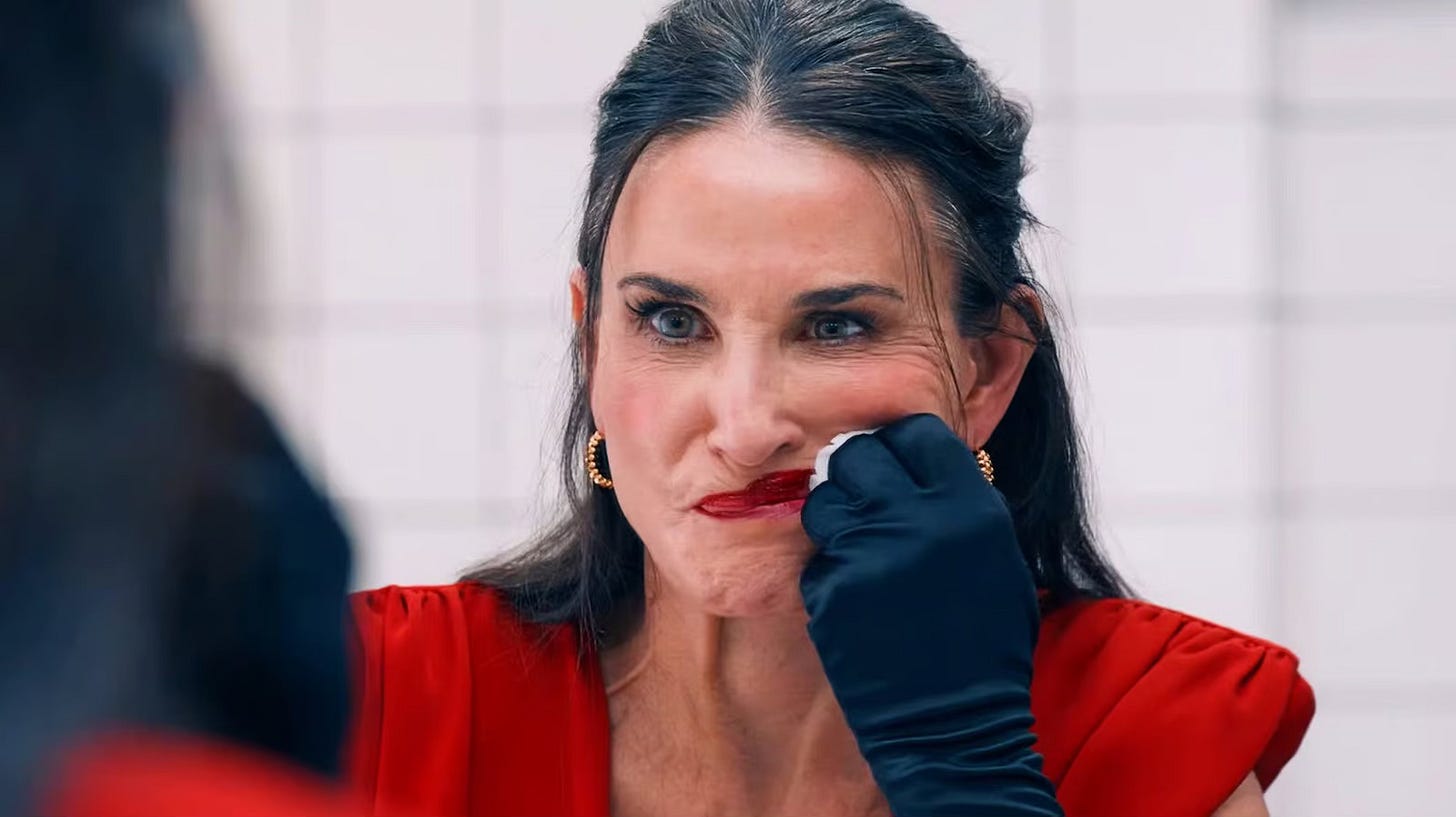The Substance succeeded where Barbie failed
the scariest stories are the ones we’re already living
After the Credits is a space to sit with a film a little longer, after the credits roll. I write about the movies we watch and the social issues they uncover — so expect spoilers ahead. I’m an independent writer, so if you enjoy the read and value the labour that goes into it, consider supporting it by liking or sharing this post. You can also manage your subscription, buy me a coffee or explore my other work on Mistral In Print.
Thank you for reading and supporting my writing — it truly means a lot.
I admit I wasn’t eager to watch The Substance at first. I had read about people fainting in theatres, walking out midway through its Cannes premiere, and even heard of one audience member who cried out “blasphemy” during the film. A friend who attended the Cannes screening mentioned the visceral reactions, and I wondered whether this film might be too much. Little did I know this extravagant horror would become my latest obsession.
It’s undeniable now that Coralie Fargeat has decided to make women’s empowerment a central theme in her filmmaker’s career. Following her 2017 film Revenge, which literally gauged the Male Gaze out of our eyeballs, Fargeat is back with The Substance, a horror-drama that dives deep into society’s brutal disregard for ageing women. Despite it not being for the faint of heart, the film earned Best Screenplay at Cannes for a reason. Behind its grotesque scenes lies a powerful narrative that cuts deeper than most mainstream feminist films.
The Substance opens on Elisabeth Sparkle’s (Demi Moore) 50th birthday. She is a celebrated Hollywood star who hosted a popular aerobics show for years. But on this particular day, she is dismissed from the show without ceremony after she overhears her producer Harvey calling her an “old rag”. She immediately understands the time has come for her to become a has-been. Driving home, distracted by a billboard of her being taken down, Elisabeth crashes her car. At the hospital, a young male nurse hands her a flash card promoting a black-market serum called “The Substance,” promising youth, beauty, and perfection.
After deliberation, Elisabeth succumbs to the promise of youth, injecting herself with the serum. A gruesome process follows, as a younger, flawless version of herself emerges from a slit in her back. This "other" self, who names herself Sue (Margaret Qualley), requires daily injections of stabilizer fluid from Elisabeth’s body to stay youthful and functional. The catch is, Elisabeth must transfer her consciousness between her older body and her younger self every seven days without exception, maintaining a precarious balance between the two lives she now leads.
Sue is soon hired as Elisabeth’s replacement on the TV show, and her fame skyrockets. But the relationship between Elisabeth and Sue quickly falls apart. Sue’s vibrant, carefree lifestyle sharpens Elisabeth’s insecurities about her aspect and age, and Sue becomes increasingly reluctant to return control to Elisabeth, straining their symbiotic arrangement.
Their hatred escalates, culminating in Sue’s impulsive decision to kill Elisabeth, assuming she can live freely without her original self. However, Sue’s body begins deteriorating rapidly without her matrix. In despair, Sue injects herself with a forbidden dose of The Substance, transforming into a grotesque hybrid of her former selves. She then dresses in a macabre costume, wearing an improvised mask from a painting of Elisabeth’s glory days, and heads to a live New Year’s Eve broadcast. Her disfigured body and face horrify the audience, culminating in a scene of violence and chaos, with this hybrid monster ultimately decapitated. The story ends as her remains deteriorate on Elisabeth Sparkle’s Hollywood Walk of Fame star, leaving a chilling impression that fame, beauty, and relevance are as fleeting as blood on the pavement.
It is not too difficult to see the heartbreaking message behind the movie. Elisabeth’s story could be painfully relatable to any woman, famous or not. The lengths women and young girls wish to go to meet unrealistic beauty standards, from cosmetic procedures to age-defying routines, are merely reflections of a society that places impossible requests on their physical aspect.
We see it even more in the lives of influencers and celebrities today, with young girls altering their appearances before they even reach legal age. The Substance pulls back the curtain on this societal obsession, showing how these beauty standards feed insecurities, robbing women of their self-worth as they age.
I knew I had to write about The Substance’s meaning from the moment I saw it, although I was not sure what cut I wanted to give this article. Someone once suggested I write about “great feminist movies” and compare The Substance to Barbie. Ironically, it gave me an idea: to show where The Substance succeeded in sparking meaningful conversations about the female experience while Barbie, despite its intentions, completely fell short.
Barbie somewhat promised us a feminist blockbuster, but its overly commercialized approach left audiences expecting much more depth than what it delivered.
Despite Greta Gerwig’s potential and the opportunity to use Barbie as a meaningful commentary on unrealistic beauty standards, I found the film to be an intellectual letdown. The only seemingly “iconic” moment of the entire movie was America Ferrara’s monologue, which sounded so basic it could have been taken straight out of an Instagram reel. Rather than sparking genuine discussion, Barbie just contributed to the insufferable image of what people think feminists are: annoying, complaining wannabe girl bosses.
Well, The Substance might have actually done a better job at grabbing the audience’s attention and get the discussion going about how women are unjustly perceived in our world. In fact, if we think of it, we might have a better shot at denouncing the unjust female experience through a horror movie than a comical movie starring an insecure Margot Robbie.
The Substance asks for no pity. It spits the reality right in its audience’s face, gripping viewers with a terrifying portrayal of society’s treatment of women. In fact, I believe the film’s most haunting scene isn’t the transformation scene where Elisabeth’s spine splits open, or when Sue kills Elisabeth, or even the decapitation scene in the end; the most difficult scene to watch is, without a doubt, when Elisabeth prepares for a date.
In an attempt to make herself feel worthy again, she organises a date with an old classmate. She puts on her nicest dress, applies red lipstick, chooses a matching bag, fixes her hair — and then, just before leaving, she catches a glimpse of her reflection in her doorknob. In a moment of self-doubt, she rushes back to the bathroom and redoes her makeup, changes outfits repeatedly, and eventually, defeated by her own insecurities, retreats to bed, abandoning her plans.
That scene stayed with me long after. It was in that moment that I realized the true horror of the film; the promise that, as a woman, your life’s worth seems to end at a certain age. Society doesn’t allow you the dignity of ageing in peace — you stay alive, but dead inside, in search of your own worth.
I’m still young but, like many women around me, I was subconsciously raised to fear ageing possibly more than fearing actual death. In The Substance, as men like Harvey, the powerful TV producer, gain wealth, status, and power, women are destined to decay once their biological clock hits a certain point, and then it all goes downhill. Elisabeth's pursuit of youth through injections ultimately transforms her into a monster, reflecting the real-life experiences of many young women who become unrecognizable after accumulating aesthetic treatments.
The Substance doesn’t just shock us, it forces us to confront our culture’s distorted view of women’s worth. It’s a reminder that true horror isn’t always found in blood and gore, but in the ways society treats those who, in its eyes, have expired.






The film is difficult to watch although perfect in its construction. This article, and the analysis are outstanding ........self-reflection becomes unavoidable "where is the real horror ?!" probably not in the splatter scenes ! Every woman might not manage to get through the movie ......but definitely will be enriched by this article! 👏👏👏
Nice literary analysis of the film 👌